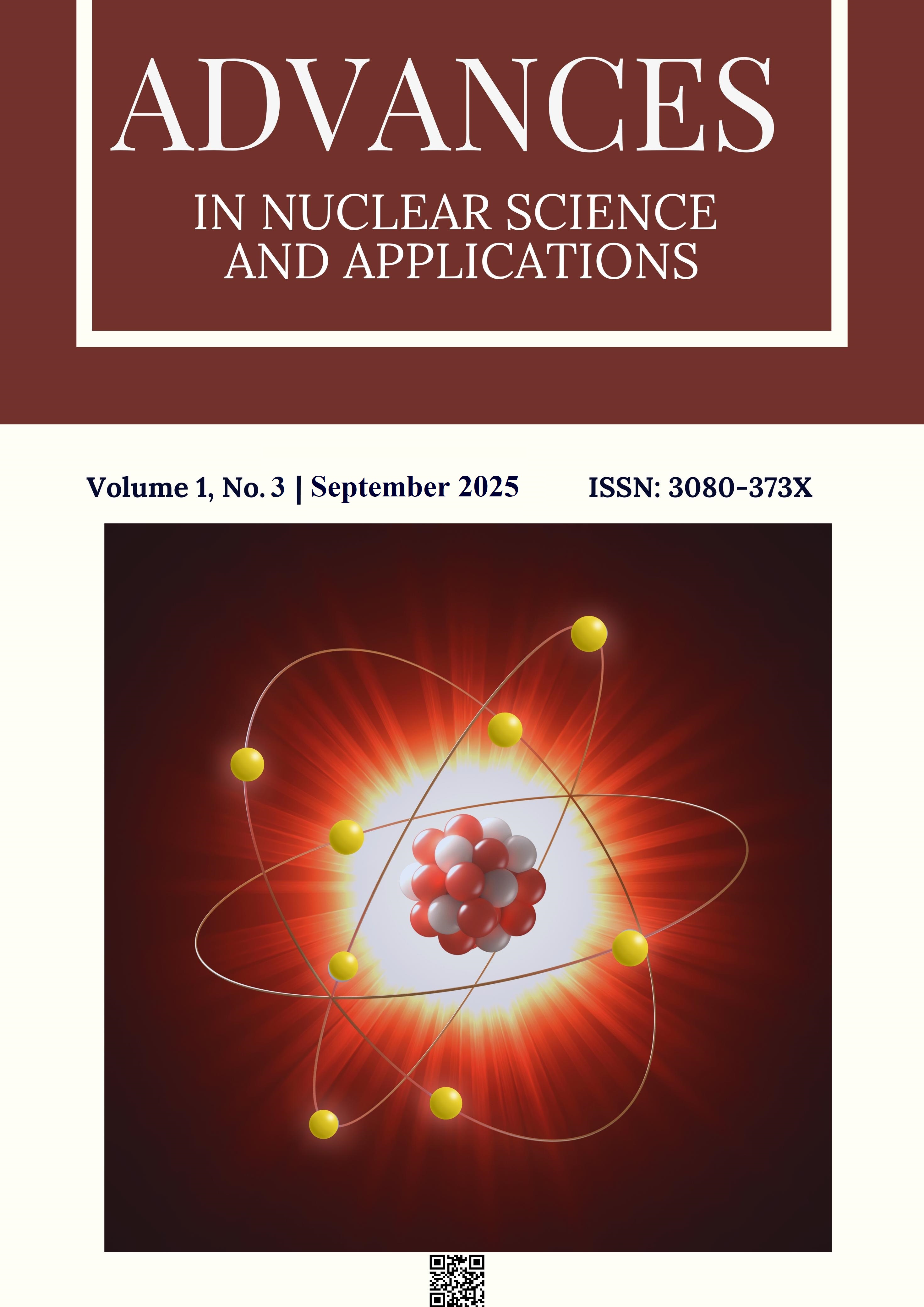$^{111}$Cd time differential perturbed angular correlation studies of high specific activity $^{111}$In in frozen aqueous solutions
DOI:
https://doi.org/10.63907/ansa.v1i3.47Keywords:
Time Differential Perturbed Angular Correlation (TDPAC), $^{111}$In → $^{111}$Cd decay, Frozen aqueous solutions, Hyperfine interactions, Defect mobility in iceAbstract
$^{111}\text{Cd}$ time differential perturbed $\gamma\gamma$-angular correlation measurements have been made using the high specific activity of $^{111}\text{In}$ in the frozen eutectic HNO$_3$ and NaOH aqueous solutions at temperatures below the corresponding $T_\text{eut}$. The experimental attenuation coefficients were measured using the $\textit{slow}$ and $\textit{fast}$ ($\textit{shock}$) means of freezing of the samples. In the case of $\textit{fast}$ freezing in both HNO$_3$ and NaOH solutions the formation of homogeneous phases with similar local structures as in the liquid state occurs. The observed dynamic character of the perturbation of the angular correlation is explained by mobility of the oriented and ionic defects in the ice structure.
References
Hemmingsen L., Butz T., Encycl. Inorg. Bioinorg. Chem. 2011, 1 (2011).
Chakraborty S., Pallada S., Pedersen J.T. et al., Acc. Chem. Res. 50, 2225 (2017).
Bauer R., Atke A., Danielsen E. et al., Appl. Radiat. Isot. 42, 1015 (1991).
Lerf A., Butz T., Angew. Chem. Int. Ed. Engl. 26, 110 (1987).
Akselrod Z., Filossofov D., Buša J. et al., Z. Naturforsch. A 55, 151 (2000).
Akselrod Z.Z., Filossofov D.V., Kochetov O.I. et al., Hyperfine Interact. 136–137, 705 (2001).
Akselrod Z.Z., Velichkov A.I., Korolev N.A. et al., Bull. Russ. Acad. Sci. Phys. 2001, 1077.
Akselrod Z.Z., Filossofov D.V., Busa J. et al., Z. Naturforsch. A 55, 151 (2000).
Filossofov D.V., Lebedev N.A., Novgorodov A.F. et al., JINR Preprint 1999, 1.
Downloads
Published
Issue
Section
License
Copyright (c) 2025 Advances in Nuclear Science and Applications

This work is licensed under a Creative Commons Attribution 4.0 International License.






